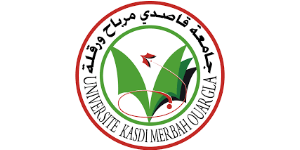تقدير واستشراف الفجوة الغدائية للحبوب وانعكاساتها على الامن الغذائي في الجزائر
Résumé: The objective of this study is to monitor and analyze the conditions of the cereal food gap in Algeria during the period from 1970 to 2019, using the descriptive analytical method, as well as formulating an econometric model for the most important determinants of the cereal food gap and its impact on food security, expressed in self-sufficiency rates in Algeria. In addition to presenting a forward-looking vision for its trends in the period (2020-2025), using the "Box-Jenkins" methodology for short-term prediction, in addition to the method of artificial neural networks, and then choosing between the two methods based on prediction accuracy criteria. The results of the econometric estimation indicate that the fluctuations of the cereal food gap in the Algerian economy are related to: average per capita GDP; city population; The yield of production and the area of land producing grains, as it was found that increasing the average per capita GDP and urban population by 10% in the long run, exacerbates the food gap for grains by 10.74% and 13.13%, respectively. As for the increase in the yield of production and the area of land producing grains by 10%, it causes a contraction in the food gap by 3.86% and 4.06%, respectively. However, an increase in the average per capita GDP of 10% in the short term will lead to a widening of the cereal food gap by 10.58%. As for expansion of the area of land producing grains by 10% causes a decrease in the food gap by 3.56%. The results also indicate the important short- and long-term effects of the cereal food gap on self-sufficiency, as they reveal an escalation in the cereal food gap in conjunction with a decline in self-sufficiency rates, as each expansion in the size of the food gap by 10% will be followed by a decline in the rate of sufficiency Self-reported by 4.69%, with a negative and strong correlation between them by about (-71%), which allows to say that Algeria's food security is still a dream that has not been achieved so far, and its realization requires taking a number of measures to remove the obstacles that hinder the path of agricultural development. The results also indicated the preference of the artificial neural networks model, as it shows superiority in prediction compared to the Box Jenkins method, as it has a higher predictive ability in tracing the original chain and being able to flexibly track its inflection points, as it was found that there is an increase in the severity of the grain food gap, which It is likely to double in the horizons of 2025, to reach about 12.57 million tons, if the production pattern remains the same as it is currently followed, especially with the acceleration of the unprecedented migration of labor in the agricultural sector, which the state is striving to make as the real alternative. for the hydrocarbon sector. From here, it is possible to imagine the food problem that will occur, and the danger it entails for the food security that remains fragile in Algeria, and the consequent economic burdens, especially since the deficit has caused the depletion of a large part of the financial resources, which could have been directed to other sectors.
Mots-clès:
Nos services universitaires et académiques
Thèses-Algérie vous propose ses divers services d’édition: mise en page, révision, correction, traduction, analyse du plagiat, ainsi que la réalisation des supports graphiques et de présentation (Slideshows).
Obtenez dès à présent et en toute facilité votre devis gratuit et une estimation de la durée de réalisation et bénéficiez d'une qualité de travail irréprochable et d'un temps de livraison imbattable!


